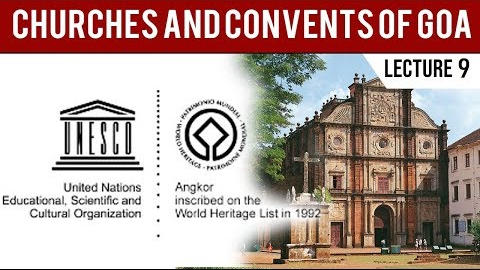Table of Contents
INDIA

GOA
- Churches and convents of Old Goa is the name given by UNESCO to a set of religious monuments located in Goa Velha (or Old Goa), in the state of Goa, India, which were declared a World Heritage Site in 1986.
- Goa was the capital of Portuguese India and Asia. The city of Old Goa was founded in the fifteenth century by the Sultanate of Muslim rulers of Bijapur as a port on the banks of the Mandovi river. The village was taken in 1510 by Afonso de Albuquerque, the first Portuguese Viceroy.
- At its peak it was said to have been a city of over 200,000 inhabitants and was known by the title ‘Rome of the East’, specifically for its splendid and innumerable collection of Cathedrals and churches.
HISTORY
- Missionaries and other religious orders settled in Goa since the sixteenth century, used it as a center for the spread of Catholicism in India.
- The settlers were initially tolerant to Hinduism and other religions, but from 1560 the spread of Catholicism was reinforced by the arrival of the Inquisition in Goa.
- The sixteenth and seventeenth centuries were the golden age of Goa, which ran a flourishing trade and came to have administrative privileges similar to those of Lisbon.
HISTORY
- These monuments reflect the cultural exchange and legacy of the Portuguese.
- The Viceroy moved to Panjim (Novo Goa) in 1759, and Old Goa lost the capital status officially in 1843.
- In the twentieth century, after several years of hostilities and diplomatic negotiations, Indian troops invaded and annexed Goa ending centuries of the Portuguese presence.
MONUMENTS
Igreja de Nossa Senhora do Rosário

MONUMENTS
Sé Catedral of Goa

MONUMENTS
Basilica of Bom Jesus

MONUMENTS
Chapel of Santa Catarina

MONUMENTS
Church of Divine Providence (São Caetano or Saint Cajetan)























 WhatsApp
WhatsApp